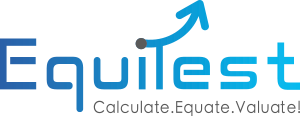
The Percentage of Sales Method is and its Use in Company Valuation
MediaHave you ever wondered what percentage of sales method is and how it can help us evaluate companies?
Have you ever wondered what percentage of sales method is and how it can help us evaluate companies? This blog post will examine the following subject - percent of sales method and its use in company valuation.
The discounted cash flow method is a method for valuing companies. The method is based on a simple idea to estimate a company's value. One must admire the future cash flows that the company will generate and capitalize on today.
The appraiser must build future profit and loss statements to calculate future cash flows, also known as pro forma statements.
In this article, we will present one of the ways to build future reports - the percentage of sales method.
The percentage of sales method allows you to forecast financial changes based on previous sales and spending accounts.
According to the percentage of sales method, each item in the profit and loss statement constitutes a fixed percentage of sales.
We will show how the method can be applied.
In the first stage, we need to be based on sales in the first year - also known as the base year.
Suppose that the sales are in the amount of NIS 100,000.
In the second stage, of implying the percent of sales method to the discounted cash flow valuation, we need to assess the growth rate of sales in the coming years.
There are different methods.
Assess the growth rate of sales, and discuss them in one of our future articles.
For example, suppose that the growth rate of sales is 10% in the coming year and 5% in two years.
The third stage calculates sales in future years by estimating sales on the base year and adding growth rates.
In our example -
Sales in the first year (base year) are 100,000.
Sales in the second year are 110,000 (1.05 × 100,000).
Sales in the third year will equal 115,500 (1.05 × 1.10 × 100,000).
In the fourth stage, we need what percentage of sales constitutes each item in the profit and loss statement in the base year.
Suppose our profit and loss statement includes the item General and administrative expenses.
Suppose that the expenses are equal to 60,000. Given the sales and the expenses, the costs constitute 60% of income in the base year (100,000 / 60,000).
The fifth step is to consider the various items in the profit and loss statements by doubling the future sales as a percentage of the sales we found in the fourth stage.
In our sample data -
Administrative and general expenses were equal in the first year to 60,000 constituting 60% of sales (100,000).
In the second year, they are expected to account for 60% of sales in the second year - 66,000 (0.6 × 110,000)
And in the third year - 69,300 (0.6 × 115,500).
According to the percentage of sales method, the five steps described above are the steps that one must apply to build the projected profit and loss statements. We will use the projected reports to calculate the company's value according to the method of discounting cash flows.
Applying the method was tedious in the past, as everything had to be done manually. In recent years the technology has been integrated into software for valuing companies. Valuation software such as equitest includes a percentage of sales calculator.
The percentage of sales calculator in the software can apply the percentage of sales method and build the projected reports within seconds. It can also calculate the relative share of each item in the profit and loss statements from sales and create a full valuation report within seconds.
To build the projected financial statements using the return-to-sales method, you can sign up for the valuation software for free, using a percentage of sales at no cost.
Last but not least, in the above paragraphs, we discussed the subject percent of sales method and its implications to business valuation and the discounted cash flow method. If you found this blog post helpful, we will be glad to hear your comments.
Related items
Media
(To unmute the video clip, click the video)

